#imperial hohenzollern
Text
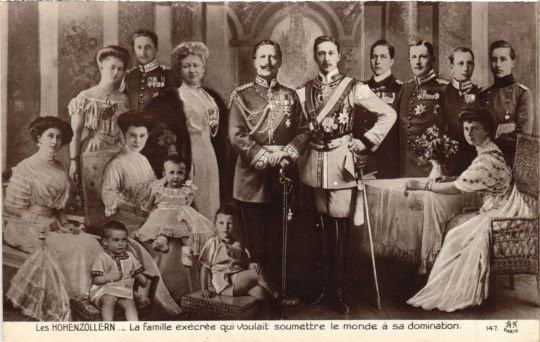
The German Imperial Hohenzollern family
French vintage postcard
#carte postale#old#ansichtskarte#photo#vintage#postkaart#imperial#photography#briefkaart#postkarte#french#ephemera#imperial hohenzollern#family#postcard#sepia#german#postal#tarjeta#hohenzollern#historic
20 notes
·
View notes
Photo
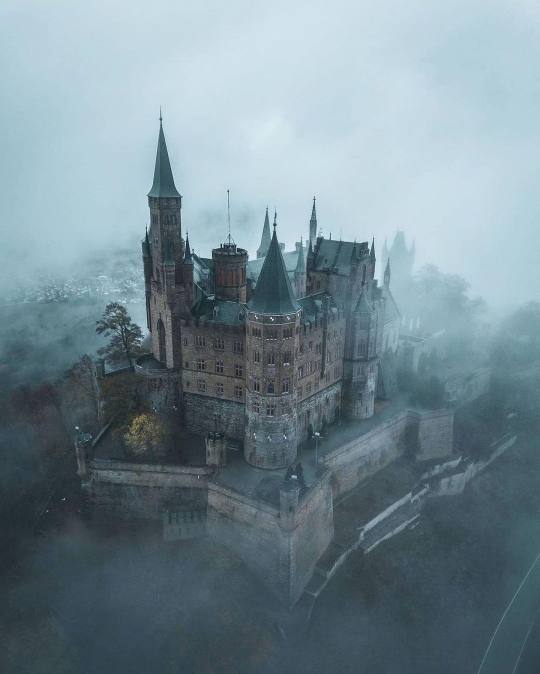
Hohenzollern Castle, Hechingen, Baden-Württemberg, Germany,
Photograph by Mat Chec
#art#design#castle#germany#hohenzollern#imperial#baden-württemberg#hechingen#luxurylifestyle#luxuryhouses#luxuryhomes#style#history#mat chec
600 notes
·
View notes
Text
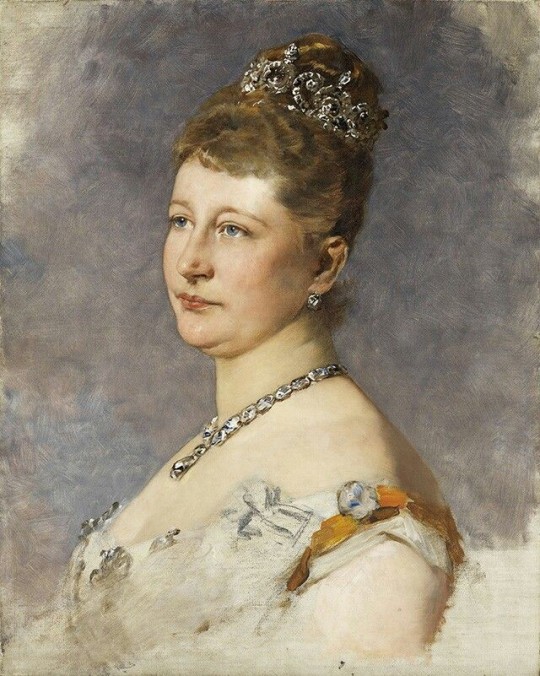
Augusta Victoria, German Empress and Queen of Prussia
#empress augusta viktoria of germany#german imperial family#german history#prussian royal family#house of hohenzollern
26 notes
·
View notes
Text

#Hohenzollern Castle#the ancestral seat of the imperial House of Hohenzollern#built on a hilltop overlooking the autumn forest and the villages beyond#Bisingen#Baden-Württemberg#Germany.
3 notes
·
View notes
Photo

“WILL THE EX-KAISER RE-ASCEND GERMAN THRONE?” Owen Sound Sun Times. March 13, 1933.
---
News from Germany is quite disturbing at the present time. The Republican flag has been replaced by the flag of the Ex-Kaiser Wilhelm, by order of President Von Hindenburg, with the Hitler flag having equality with it. Europe is much concerned over recent events in Germany and there are hints of another war.
From left to right:
EX-KAISER WILHELM,
CHANCELLOR HITLER
PRESIDENT VON HINDENBURG
[AL: A key lesson from reading Canadian coverage of the Nazi seizure of power is that even the most anodyne newspaper coverage was rightly concerned about what this meant, and had Hitler pegged as a dangerous militarist. It was only later, at high levels of press and politician, that a pervasive effort was made to make his government seem reasonable and normal.]
#nazi seizure of power#german militarism#german monarchy#hohenzollern#kaiser wilhelm ii#hin#gravediggers of german democracy#german rearmament#nsdap#imperial germany#third reich
0 notes
Text

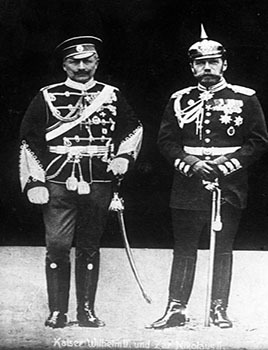
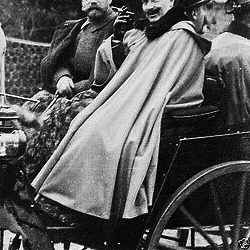

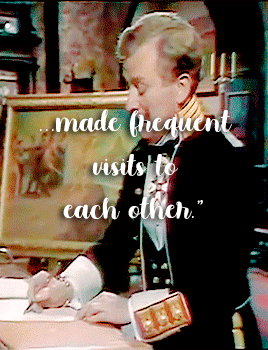
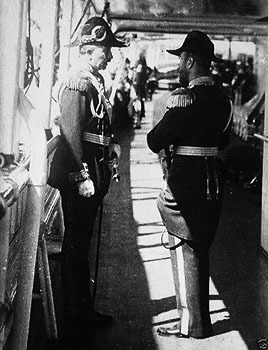
"Dynastic alliances were thus as much in the mind of the future King Edward VII as they were in that of the Kaiser, although Wilhelm's matchmaking ambitions had been part of a grandiose plan for the creation of a powerful new Zollverein - a continental alliance of Germany, Russia and France. Steering Alix of Hesse in the direction of Nicholas of Russia had been one way of shoring this up. Perhaps, in the wilder reaches of his vivid imagination, Wilhelm nursed visions of being another Frederick the Great, the Prussian monarch who had been instrumental in brokering the marriage of his German relative Sophie van Anhalt-Zerbst-Dornburg, and with it her rise on the Russian throne as Catherine the Great. The new Tsaritsa Alexandra would, however, never demonstrate any of Catherine's breadth of vision and energy as Empress. If anything, she inherited the prosaic, domestic Victorian values of her mother Alice - of example, duty, morality and a sense of service. But in one thing at least Alexandra would later demonstrate an instinct that she shared with her cousin Wilhelm: an entrenched belief in absolutist autocratic power. Wilhelm's mother, the Dowager Empress Victoria, had certainly hoped that her niece Alexandra's succession to the Russian throne in November 1894, on the sudden death of Alexander III, might foster improved relations between Russia and Germany. In the years up to 1908 Nicholas and Wilhelm made frequent visits to each other for army manoeuvres, reviews of the fleet or simply to enjoy the shooting at their respective hunting lodges in Prussia and the Russian imperial game reserves in Poland. They had even gone yachting together - the Romanovs on the imperial yacht, the Standart, the Kaiser on the Hohenzollern - at Kiel and around the Finnish skerries. But far too often the prickly, meddlesome Kaiser had succeeded in upsetting those around him. Despite this, in his letters to Nicky, Willy repeatedly assured him of his love and devotion; after all they shared the same fundamental belief in their divine right as sovereigns. "We, Christian Kings and Emperors have one holy duty imposed on us by Heaven,” he told Nicky. ‘"That is to uphold the principle “von Gottes gnaden" [by the grace of God].”
The race to save the Romanovs | Helen Rappaport
#tsar nicholas ii#kaiser wilhelm ii#nicholas romanov#tsar#kaiser#russian imperial family#facts#german imperial family#imperial russia#fall of eagles#fall of eagles 1974
21 notes
·
View notes
Text
Our Contestants
1: Maria Leopoldina of Austria, First Empress of Brazil
2 Dona Maria I of Portugal
3: Dona Maria II of Portugal
4: Isabel, Princess Imperial of Brazil
5 Carlota Joaquina de Bourbon
6: João I, Duke of Bragança
7 João IV, King of Portugal
8: Afonso I, Duke of Bragança
9: Fernando I, Duke of Bragança
10: Jaime I, Duke of Bragança
11: Teodósio I, Duke of Bragança
12: Teodósio II, Duke of Bragança
13: Afonso VI of Portugal
14 Pedro II of Portugal
15: João V of Portugal
16: João VI of Portugal
17: Pedro II of Portual
18 Pedro I of Brazil/ IV of Portugal
19: Miguel I of Portugal
20: Pedro V of Portugal
21: Luís I of Portugal
22: Carlos I of Portugal
23: Manuel II of Portugal
24 Dom Pedro II of Brazil
25: Teresa Cristina, Empress of Brazil.
26: Catherine de Bragança, Queen Consort of England, Scotland, and Ireland
27: Infante Dom Manuel, Candidate for the throne of Poland
28: José I of Portugal
29: Carol II of Romania (Carlos II in Portuguese)
30: Ferdinand I of Romania
31: Infantá Antonia de Bragança, Princess Consort of Hohenzollern
32: Amélie of Leuchtenberg
33: Infanta Isabel Maria, Regent of Portugal
34: Mariana Vitória of Spain, Queen Consort of Portugal
35: Maria Francisca of Savoy (Consort to Afonso VI and Pedro II)
36: Maria Pia of Savoy (Queen-Consort to Luís I of Portugal)
6 notes
·
View notes
Text


Princess Maria Teresa von Hohenzollern, née Princess Bourbon-Two Sicilies, by Philip de László, 1900
De László stayed with the Imperial German family at the end of 1899 and in early 1900 to paint a formal half-length portrait of Maria Teresa von Hohenzollern. It was presumably at the end of his stay at Potsdam that he made the present portrait, which he asked his sitter to sign for him to keep as a souvenir in his collection. De László also made a very similar drawing of her in charcoal, for her to keep as a memento. An unsourced French press cutting in de László’s archive suggests that it was one of these two drawings which the artist showed in Rome, in Bishop Fráknoi’s house, alongside the portraits he had just completed in the Holy City, most notably those of Pope Leo XIII and Cardinal Rampolla, but also of Maria Teresa’s mother Mathilde, Countess of Trani. [x]
Like so many of his sitters, the Princess became fond of him and his wife and soon after his visit she wrote to him: “I want to thank you from the depth of my heart for the pleasure you have given to my Baroness [her lady-in-waiting, Baroness Lilly Goeler von Ravensburg] and to me. It is with a feeling of soft melancholy that I now go to the studio where, thanks to you, I have spent so many agreeable hours. I should be tremendously pleased if it were possible for you to come to Potsdam in August. You must be with us from breakfast-time onward, and we will spoil you terribly and take care of you. [...] I shall always think of you in faithful friendship and attachment as long as I live, and whenever I can help you in my humble way I shall always be ready to do so, wherever I am. You must feel how grateful I am to you. God bless you and save you throughout your life. This is my sincere desire. Don’t quite forget your Margit.” [x]
The de László Archive
#today is mädi's birthday~#maria teresa of bourbon two sicilies princess of hohenzollern#artist: philip de lászl��
30 notes
·
View notes
Text
Lutheranism, finally, was the religion of the economically backward countries that had been most heavily exploited by Rome, but had the least prospects of either annihilating or dominating Rome. Thus they had to break with Rome completely but were unable to intervene decisively in the great competition to take over its inheritance: Lutheranism held sway in North and East Germany, in Denmark and in Sweden. These were countries where the towns were comparatively under-developed and the nobility strongly predominant. In West Germany, where the towns were stronger and more numerous, Calvinism took the lead.
Where Lutheranism ruled, capitalist development took a long time to work its way out of the feudal chaos. It created no revolutionary bourgeoisie. On the contrary it made the landlord into an owner of property, the knight into a commodity producer. This happened particularly in the arable lands east of the Elbe. Here the Church paid for the ‘pure doctrine of God’ with their goods, the peasants with ever-increased exploitation.
In conformity with these backward conditions Lutheranism was a backward religion. Ever since his betrayal of the peasants Luther had become a crawling servant of the princes. Out of his translation of the Bible, which, with its presentation of simple primitive Christianity, had contributed not a little to the excitation of the masses, he henceforward made a sort of princely catechism that no bootlicker of monarchy would have found objectionable. The princes, Bishops and Junkers were the patrons of the Lutheran Church. It was much more sharply divided in this respect from the democratic church constitution of Calvinism than in all the hair-splitting about the Last Supper. The Dutch Calvinists accused the spiritual life of the Lutheran Church of being a ‘worse than bestial stupidity.’
Thus the German Reformation, after the revolutionary fire had been extinguished with the blood of the peasants, became a campaign of robbery and plunder by the German princes and their ever-growing emancipation from Imperial authority. The Princes’ ‘Reformation’ consisted of naming themselves heads of their national churches, having Lutheranism developed by their court chaplains as a religion of narrow-minded subordination, and particularly of pocketing the rich property of the Church themselves.
These princely ‘Reformations’ were all aimed at the same goal, for all the colourfully chequered variety of their external manifestations. The history of the Hohenzollerns provides a particularly classical example of this. Only the Junkers got a share of the booty, and perhaps the urban patricians who, because of the decay of the towns, had to be satisfied with what they got. The masses, the peasants and the town plebeians gained not the slightest benefit from the robbery of Church property.
The German Reformation and its consequences
9 notes
·
View notes
Text


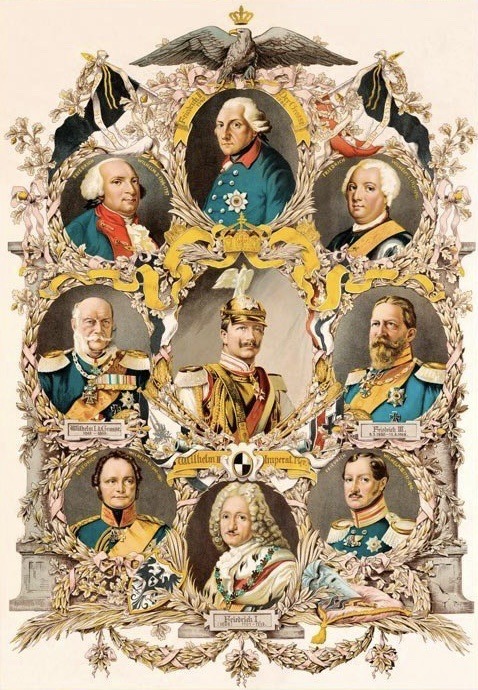
Today I witnessed and participated in an amiable small-talk that can easily be considered “stuff of legends”. 😂
Me, looking through a lovely pre-revolutionary book about Napoleonic era, which was provided to me for a brief introduction, and reading out loud some lines occasionally: "It is said that when the French heard about the Frankfurt proposals, they complained and laughed interchangeably at the thought that the fate of modern Europe would be in the hands of some Habsburgs or Hohenzollerns, who were the embodiment of German feudalism."
*light chuckles intensifying*
*then more coherent conversation takes place*
— So, is it better to have French imperialism instead of German feudalism?)))
— Yes. Keep flipping through. 🗿
*chuckles instantly turn into homeric laughter*
❗️Friendly reminder: it was a simple joke, historical process is a much more complicated business as well as specific terms used in that purely comedic case. ✌️
#count’s private life#history meme#napoleon i#house of habsburg#house of hohenzollern#napoleonic era#napoleonic wars#19th century
9 notes
·
View notes
Text

Themistokles von Eckenbrecher (Athen 1842 - Goslar 1921)
The imperial Yacht Hohenzollern in the Esefjord 1914
Oil on canvas
Stahl Auctions
3 notes
·
View notes
Text

The Imperial Hohenzollern family
German vintage postcard
#family#historic#hohenzollern#photo#briefkaart#vintage#sepia#photography#carte postale#postcard#postkarte#imperial hohenzollern#postal#tarjeta#ansichtskarte#old#imperial#ephemera#postkaart#german
7 notes
·
View notes
Text

Empress Victoria of Germany nee Princess of The United Kingdom
#empress victoria of germany#german imperial family#german history#prussian royal family#house of hohenzollern
14 notes
·
View notes
Text
"It is indeed true that no other democracy would dream of staging a ritual like the coronation, in which the people are declared to be loyal to the head of state rather than the other way round – and in which they get to pay for a billionaire’s extravagant celebration of his own godly humility.
But the fact that nobody else would dream of doing it is turned, in the monarchist mindset, into a point of pride. It betokens the ultimate in exceptionalism: the idea of British uniqueness. It is not just that the British are the only people who would do something like this coronation – it is that they are the only ones who could do it so perfectly.
It is a truth universally acknowledged that, whatever one might think of the British, they put on a damn good royal show. Charles’s coronation is widely touted as merely the latest iteration of an ancient spectacle that has been so perfected over a thousand years that it is now bred in the bone of Britishness.
But this is bogus. The idea of the English as the masters of royal ceremony is, historically speaking, a very recent invention.
In 1860, for example, Lord Robert Cecil, a leading member of the English aristocracy, wrote in exasperation that “Some nations have a gift for ceremonial” but that his own was assuredly not one of them.
“We can afford to be more splendid than most nations; but some malignant spell broods over all our most solemn ceremonials, and inserts into them some feature which makes them all ridiculous ... Something always breaks down, somebody contrives to escape doing his part, or some bye-motive is suffered to interfere and ruin it all.”
As the historian David Cannadine has shown, the British, even at the height of empire in the 19th century, often complained of the “ineptly performed ritual” of their royal occasions. It was not until the period after the end of the first World War that they persuaded themselves that they were uniquely good at it.
The British could afford to be inept at royal spectacles in the 19th century because the monarchy was still a real power within Britain, and Britain was still the leading power in the world. The theatre of sovereignty and supremacy is not so important when you have the stuff itself. As Cannadine puts it, “The certainty of power and the assured confidence of success meant that there was no need to show off.”
The notion that Britain should develop royal ceremonial as its unique selling point depended, paradoxically, on the collapse of monarchy as the norm of European governance. The British could claim it as “something which was uniquely ours” precisely because they now had a monopoly on imperial coronations in Europe.
The older firms that used to be the exemplars of royal ritual – the Romanovs of Russia, the Hapsburgs of Austria-Hungary, the Hohenzollerns of Germany – had gone out of business. (The Scandinavian monarchies of Denmark, Sweden and Norway had all scrapped elaborate ceremonial coronations as silly anachronisms by 1906.)
This implied, rather alarmingly, that God (supposedly the source of royal authority everywhere) had gone a bit iffy on the whole business of monarchy. He hadn’t done much for the British royal family’s deposed or murdered cousins.
But according to the inverse logic, the idea of a sacred ritual (all that anointing with oil blessed in Jerusalem) had to be played up even more because sacral kingship as a real thing was disappearing."
3 notes
·
View notes
Text
On Dec. 7, authorities across Germany arrested at least 25 people in connection to a conspiracy to storm the Bundestag, attack the German power grid, and overthrow the German government. At least 25 others have been accused of involvement in the plot.
The conspirators modeled this attack, which they had been planning since November 2021, on the aborted attack by far-right supporters of former President Donald Trump on the U.S. Capitol on Jan. 6 of that year. But this isn’t a local imitation of an American original, although it combines German ideas with U.S. influence. It’s an intensely German group, rooted in a bizarre interpretation of German history.
This confluence of the local and the global is characteristic of German right-wing extremism, and it can produce unexpected results, as I’ve written before for Foreign Policy. Within these global linkages, many conspiracy theories—on the far left as well as the far right—have been incorporated into the QAnon intellectual space, and German conspiracy theories are no exception.
In this case, the conspirators are members of a disparate movement known as Reichsbürger, or “citizens of the Reich.” (This word can be plural or singular.) The Reich in this case is the Second Reich, the German empire that stood from 1871 to 1918.The ideology behind this movement has been promoted since the 1970s, when the jurist—and Holocaust denier—Manfred Roeder spread it in an attempt to revive both National Socialism and pre-Nazi imperial Germany.
The group’s basic idea is that the Federal Republic of Germany, the modern German government, does not exist. It maintains that the Third Reich, the Wilhelmine government’s successor—this complex of ideas seems to elide the Weimar Republic–was never formally dissolved in 1945, and that the modern German government is a tool of the Allied occupation, which is still ongoing. This belief system thereby combines hidden nostalgia for the Third Reich with overt nostalgia for the Second; for instance, many Reichsbürger followers want Germany to return to its 1937 borders. There is a powerful strain of antisemitism in it. These people have been compared to American and Canadian sovereign citizens; like sovereign citizens, many do not pay taxes. And like sovereign citizens, they can be violent: Reichsbürger were responsible for one murder in 2016 and nine in 2020.
In a dark reflection of German society in general, this conspiracy theory is profoundly legalistic. Reichsbürger believe that the republic is not a state but a private company founded in 1949 by the Allies, while the German Reich exists legally but without institutions—so the movement’s followers have taken it upon themselves to form “provisional” institutions. This pathological legalism appeals to people involved with Germany’s ordinary legalism: many members are former police officers, military officers, and civil servants. The people arrested on Dec. 7 include a former member of the Bundestag from the far-right AfD party, former East German state security, and former members of the German special forces.
They also included several German nobles, including one of the ringleaders, Heinrich XIII Prinz Reuss zu Köstritz. He is a minor noble—a very minor one. He is a prince, but the German states were once almost as thick with princes as Saudi Arabia—although for very different reasons. His princely status does not mean that he is related to the monarchy of the former empire, the family of the former Kaiser; it means that his family used to head principalities. (The Kaiser’s family is the Hohenzollerns. This Heinrich is a Reuss-Köstritz, although U.S. papers have mistaken him for a Reuss-Greiz, a branch of this multipartite family that ended legally in 1918 when its last head abdicated.) As with the vast majority of German nobles, even the word “aristocratic” is pushing it.
What has been keeping former East German state security, members of the far-right AfD party, monarchists without a monarch, fascists inside the German special forces, anti-vaccine activists, and believers in the QAnon conspiracy theory together?
One element is the unique politics of East Germany. The house of Reuss, in all eight of its parts, is Thuringian, and East German aristocrats felt betrayed after the reunification of Germany in 1990. They had hoped that reunification would mean a restoration of their status and their property, much of which was seized by East Germany’s communist government. That this did not happen radicalized many of them, just as East Germans more generally felt betrayed by the reunification.
But the East German radical fringe has also been shifting as it incorporates concepts from the global far right. In a rapid move away from 70 years of East German history, AfD adopted an anti-vaccine stance in late 2021 under the influence of the Querdenker movement and far-right groups in the United States. The worldwide far right may claim that it is for those left behind by globalism, that it is anti-United States, that it is anti-European Union, but right-wing extremists also “imagine themselves as participants in a global struggle against a global enemy.”
And yet the Reichsbürger movement remains intensely German. Linda Schlegel, writing for European Eye on Radicalization, describes the movement’s fixation on the fin de siècle German Empire as a form of displacement: “It is based on the wish to display patriotism overtly,” which many Germans still feel is taboo. Patriotism for the 19th century is safe, since National Socialism remains harmlessly in the future, as long as you ignore what Manfred Roeder believed. In this interpretation, Reichsbürger are yet another expression of the German attempt to come to grips with the historical trauma not only of having suffered evil, which can be expressed, but of having done it—which cannot.
In this context, the Dec. 7 conspirators’ beliefs as expressed in the official government statement made on their arrest are fascinating.
Like their QAnon cousins, this group believes that Germany is currently governed by members of a so-called deep state, which is their responsibility to fight against as part of a network of American-inflected domestic defense cells—in German, they were described with the same word that is used to translate “Homeland Security.”
But in another tortuous circle in Germany’s agonizing attempt to put its past finally behind it, this group also believes that the deep state is opposed by the “Alliance,” “a technically superior secret society of governments, intelligence services and militaries of different states, including the Russian Federation and the United States of America.” The intervention of this Alliance is imminent, since it is already in Germany.
This conspiratorial group therefore has awaited liberation by the United States and Russia, which it believes is their responsibility to aid. The group was supposed to form “a (military) transitional government” that “should negotiate the new state order in Germany with the victorious Allied powers of World War II.” In addition to having a Russian lover, Heinrich XIII had already made contact with a Russian individual for this purpose. That is to say, this little group has been roleplaying the formation of a nondemocratic German social order, to capitulate at its head.
Is this not Freud’s return of the repressed? These people sought to destroy the German constitutional democratic order in the name of an ideology developed originally by former Nazis, but also to negotiate a surrender agreement once again with the United States and Russia—and this time get it right. Even German visions of victory turn into compulsive repetitions of defeat.
6 notes
·
View notes
Text
The 8 most famous Landmarks in Germany
Germany, situated in Central Europe, boasts a rich tapestry of history, culture, and innovation. From the medieval charm of Bavaria to the modernity of Berlin, it offers a diverse landscape. Renowned for precision engineering, its industries drive the global economy. With a love for literature, music, and hearty cuisine, Germany warmly welcomes visitors to explore its picturesque landscapes, historic landmarks, and vibrant cities.
Here are eight of the most famous landmarks in Germany:

1. Brandenburg Gate, Berlin:
Perhaps the most iconic symbol of Berlin and Germany, the Brandenburg Gate stands as a symbol of peace and unity. Built in the late 18th century, it has witnessed significant historical events, including the fall of the Berlin Wall.
Also Read: Azerbaijan visa
2. Neuschwanstein Castle, Bavaria:
Known as the inspiration for Disney's Sleeping Beauty Castle, Neuschwanstein is a fairy-tale castle nestled in the Bavarian Alps. It's one of the most photographed landmarks in Germany, attracting millions of visitors each year.
Also Read: south korea visa
3. Cologne Cathedral (Kölner Dom):
This magnificent Gothic cathedral dominates the skyline of Cologne. Its twin spires soar above the city, and its intricate architecture and stunning stained glass windows make it one of the most impressive cathedrals in Europe.
Also Read: Japan visa
4. Reichstag Building, Berlin:
Home to the German parliament, the Reichstag is an architectural masterpiece with a glass dome offering panoramic views of Berlin. It's a symbol of Germany's democracy and history, having undergone significant reconstruction after World War II.
Also Read: Egypt visa
5. Berlin Wall:
While not a single structure, the remnants of the Berlin Wall serve as a powerful reminder of the city's divided past. Sections of the wall can still be seen throughout Berlin, including the famous East Side Gallery, where artists from around the world have created murals on its remaining segments.
Also Read: Bangladesh visa
6. Heidelberg Castle:
Perched above the picturesque town of Heidelberg, this Renaissance castle is renowned for its stunning views of the Neckar Valley. Though partially in ruins, it remains an emblem of Germany's romantic past and is a popular tourist destination.
Also Read: Belgium Visa
7. Hohenzollern Castle:
Located atop Mount Hohenzollern in the Swabian Alps, this fairytale-like castle is the ancestral seat of the Prussian royal family. With its hilltop location and commanding views, it's one of the most visited castles in Germany.
Also Read: Greece visa
8. Nuremberg Castle:
Dating back over a thousand years, Nuremberg Castle is one of the most important medieval fortresses in Europe. It overlooks the historic city of Nuremberg and contains several impressive structures, including the Imperial Castle and the Sinwell Tower.
Also Read: Norway visa
Conclusion
In conclusion, Germany's iconic landmarks, from the historic Brandenburg Gate to the enchanting Neuschwanstein Castle, epitomize its rich heritage and cultural diversity. A visit promises awe-inspiring experiences, but remember to check Germany visa requirements for seamless travel. Explore, indulge, and immerse yourself in the wonders of this captivating nation.
0 notes